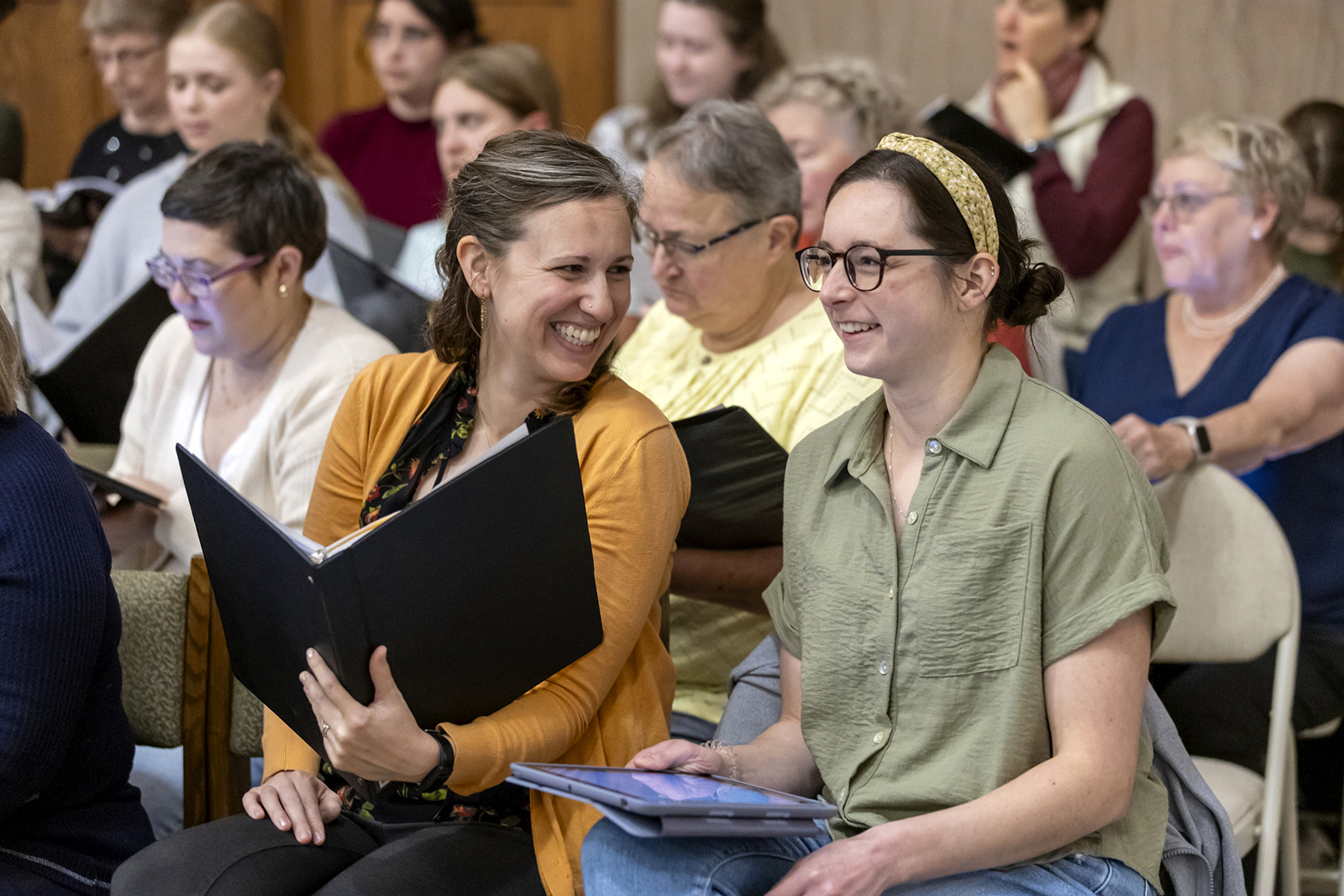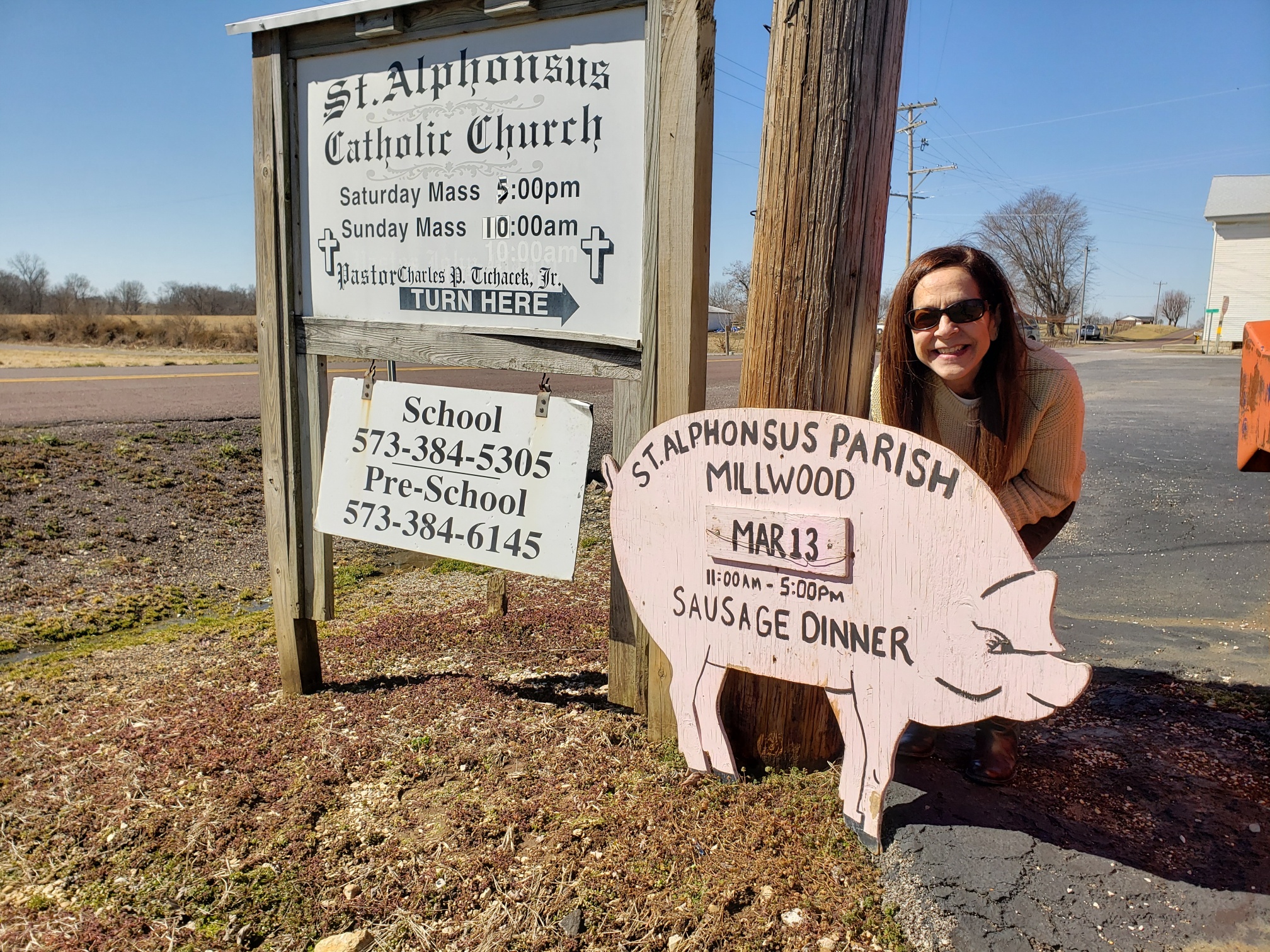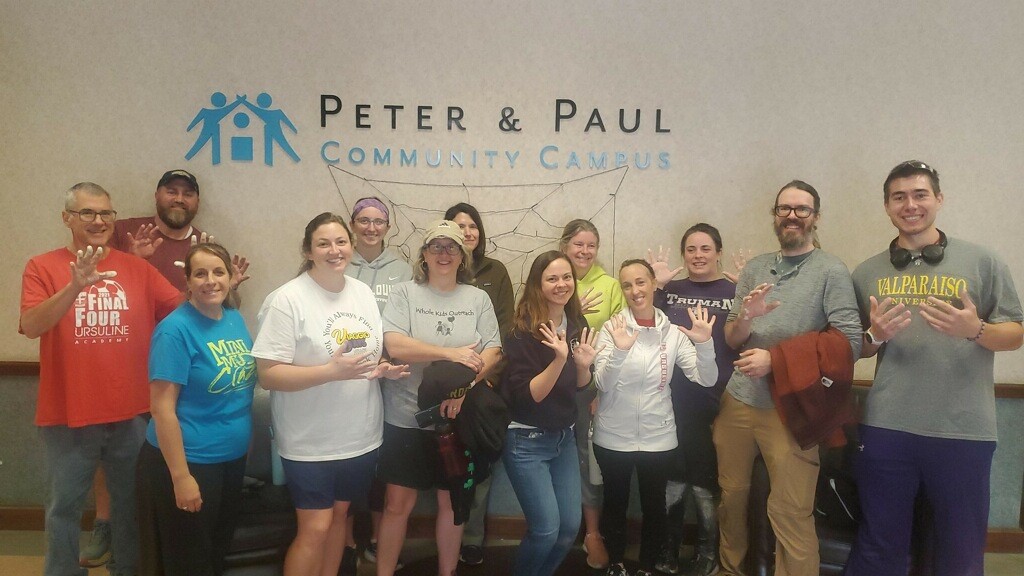Fire academy class named after Eureka fire district chaplain Father Leo Spezia
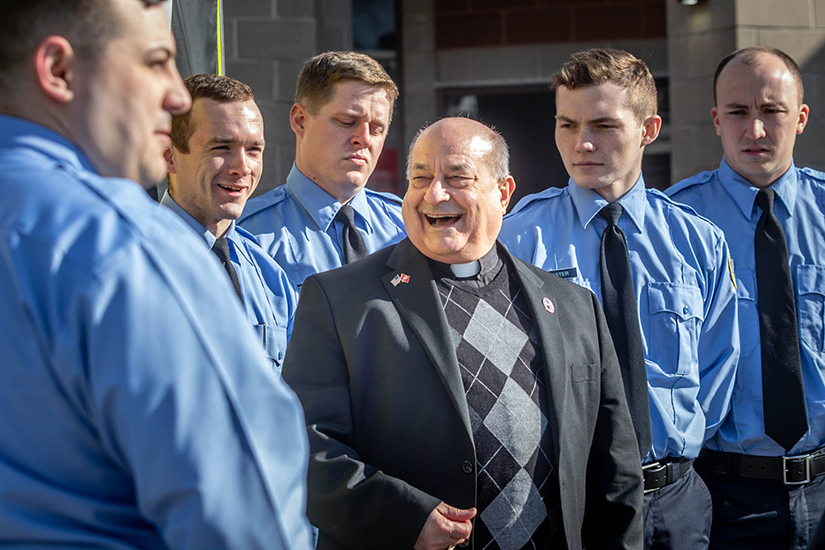
Father Leo Spezia exited a Eureka Fire Protection District ladder truck and greeted Ryan Rackovan, president of the new class at the Greater St. Louis County Fire Academy.
Each recruit class is dedicated to an individual, a group of people or an organization that has had an impact on the fire service. Father Spezia, associate pastor of Most Sacred Heart Parish and chaplain of the Eureka Fire Protection District, is the honoree of the 109th class of the fire academy. He traveled to the academy to visit with the class and be included in a class photo with the truck.
Rackovan, a parishioner at St. Peter in St. Charles, said he appreciates Father Spezia’s visits. “He’s an easy-going, approachable guy who keeps it light,” Rackovan said.
Scott Barthelmass, division chief of the Eureka Fire Protection District, said Eureka’s Fire Chief Greg Brown “felt that he was a great candidate because he’s meant so much to the fire service. Father Leo has been such an asset to so many organizations as a chaplain and supporter of all the personnel and helping them stay well and focused, and providing a lot of support after some very trying calls. Father Leo has always been there, the go-to person.”
Barthelmass called Father Spezia a regular presence around the firehouse and in the community. Eureka Battalion Chief Brian Callahan called him simply “one of the guys.”
A congregation
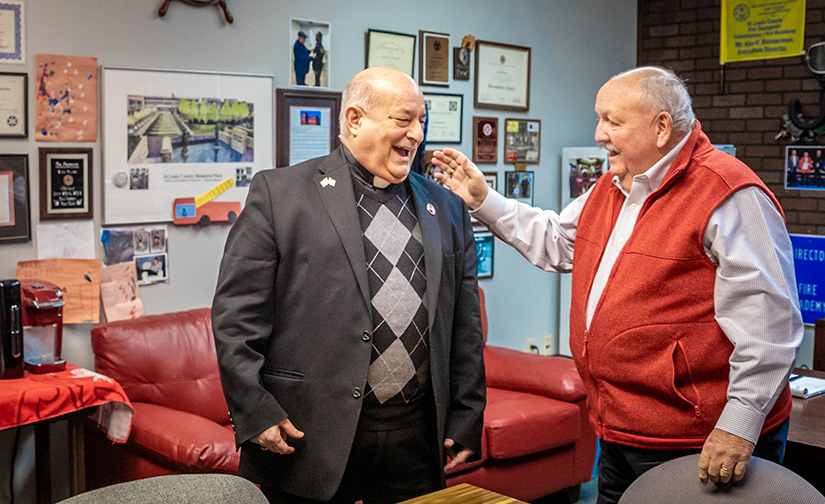
The only other chaplain to be honored since the naming of classes began in 1980 was Father Jerry Jakle, spiritual leader of the St. Louis Fire Department from 1962 until his death in 1980. He was named a chaplain in 1976 and was the honoree of the third academy class in 1981.
Fire and police chaplains provide spiritual counseling and assistance to members of the department and their families as requested. They also respond to the needs of victims and other community members in incidents involving a police or fire department response. It’s often referred to as a ministry of presence.
Father Spezia said he was surprised when he learned of the honor. “It’s usually given to a firefighter. They’re the real heroes,” he said.
He’s served as a chaplain since about 1988 in police and fire departments in communities where he was assigned as a parish priest. He’s also served as chaplain at the fire academy, the Missouri Highway Patrol and the FBI. A few other priests in the archdiocese also serve in similar roles as chaplains.
The first responders become a congregation, Father Spezia said. He told the recruits of the motto “service above self.” First responders, he said, “don’t get into this business for money. They get into this because it’s in their blood to really help people and be of service. At one moment they see people at the high points of their life, like delivering a baby maybe, or bringing someone back to life whose dying. At other times they see the rough parts of life, people who are sick and dying or dismembered in accidents.”
A vocation
Father Spezia tells fire responders “it’s not a job, it’s a vocation. It’s God calling them to be of service to others.”
The chaplaincy serves all first responders. “There’s no color, no creed, there’s just the Lord,” Father Spezia said.
He recalls being with police officers when they responded to an accident call in which a motorcyclist ended up underneath a truck which dragged him for a distance. The firefighters showed “such a respect for life” in dealing with his body, Father Spezia said.
The members of the current class have a “great sense of dedication,” Father Spezia said. The academy training and studies are difficult, he added.
Their learning continues as they go to work, but when responding to emergencies, he said, “when things get rough,” they need to “go back to autopilot and do things the way they were trained.”
New recruit classes end up as firefighters who honor the current practices in firefighting, but also are relied on to be innovative, the fire chaplain said.
An inspiring presence
Kim Besserman, executive director of the St. Louis County Fire Standards Commission and the Fire Academy, said Father Spezia inspires people: “I’ve been around Father (Spezia) 25, 30 years. He’s right at your level, down to earth.”
The priest has been present at what Besserman called “some scenes of bad things, with us and basically for us,” and talked firefighters and others through making sense of what they’ve experienced. “We see a lot of things people don’t want to see, but he’s brought us through a lot of stuff. We’re very proud of him.”
At the fire academy, Besserman said, the young recruits and other young firefighters seek his counsel. “They don’t have to be Catholic. But they know that his presence is a good thing.”
It was time to honor Father Spezia’s service, said Besserman, who is a parishioner of St. Norbert in Florissant. “He says it’s a big honor for him, but it’s really a big honor for us. He’s the face of us, a lot more than he thinks.”
Fire Academy
The Greater St. Louis County Fire Academy is a not-for-profit educational corporation, which contracts with the St. Louis County Fire Standards Commission to provide firefighter training for St. Louis County. The commission maintains the waiting list, determines when applications are released and sets the minimum standards.
There are 43 fire departments and fire protection districts in St. Louis County. Each agency does its own hiring and has its own individual hiring requirements. To work at any of the fire service agencies in St. Louis County, an applicant must be certified through the St. Louis County Fire Academy.
There are two ways to go through the academy. One way is to be hired as a full-time, paid firefighter by a fire department or fire protection district in St. Louis County. Anyone hired as such must attend the St. Louis County Fire Academy’s Basic Firefighter Training Program within six months of their employment date. Therefore, new hires receive first priority in seating in each academy class.
While some of the 43 agencies will hire an individual and send them through the academy, others will only hire those individuals who have already been through the academy. The majority of those agencies that do hire and send through the academy require a paramedic license for employment.
The second way to go through the academy is to participate in the admission process for self-sponsored students. That process involves obtaining, completing and submitting an application packet.
Father Leo Spezia exited a Eureka Fire Protection District ladder truck and greeted Ryan Rackovan, president of the new class at the Greater St. Louis County Fire Academy. Each recruit … Fire academy class named after Eureka fire district chaplain Father Leo Spezia
Subscribe to Read All St. Louis Review Stories
All readers receive 5 stories to read free per month. After that, readers will need to be logged in.
If you are currently receive the St. Louis Review at your home or office, please send your name and address (and subscriber id if you know it) to subscriptions@stlouisreview.com to get your login information.
If you are not currently a subscriber to the St. Louis Review, please contact subscriptions@stlouisreview.com for information on how to subscribe.

